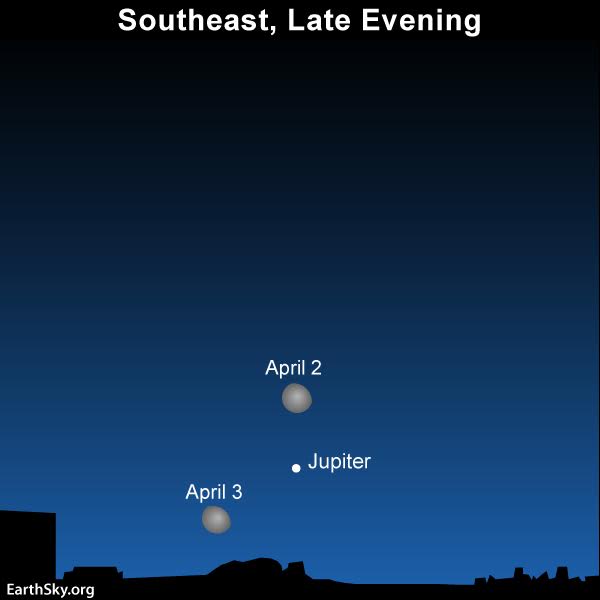On April 2 and 3, 2018, watch for two very bright objects near each other late at night and before dawn breaks. They are the waning gibbous moon and king planet Jupiter. Two other planets – Mars and Saturn – are also nearby.
On April 2 and 3, as seen from the northern part of Earth’s globe, the moon and Jupiter can be found ascending in the southeast in late evening. From the southern part of the globe, the moon and Jupiter rise earlier. From the entire globe, after they rise, the moon and Jupiter are up for the remainder of the night.
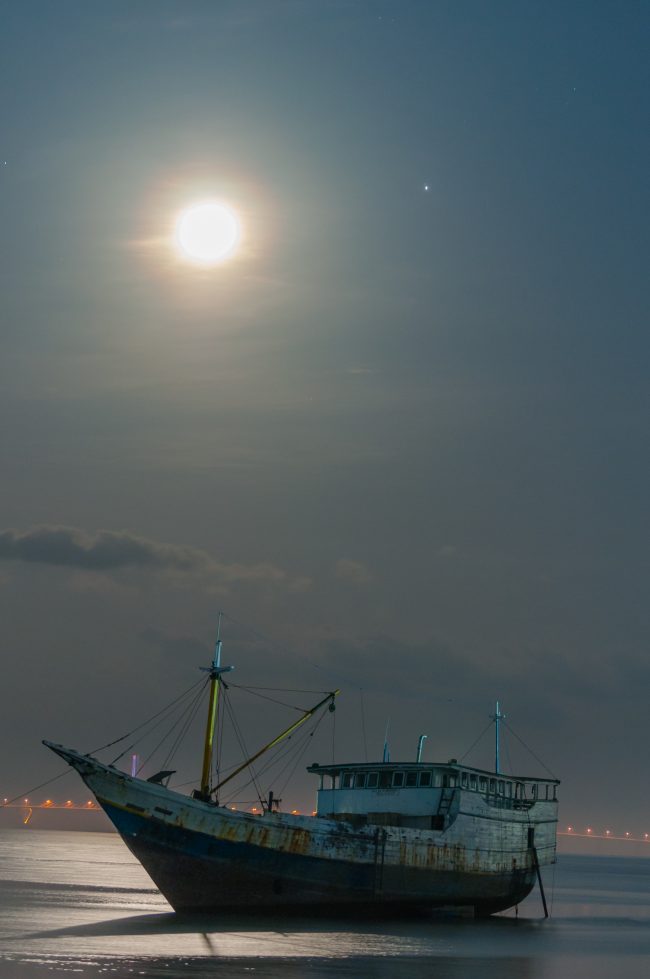
Meanwhile, Mars and Saturn come up closer to the time of dawn. They’re not as bright as the moon and Jupiter, but they’ll be nearby. Their conjunction is the morning of April 2, when they’re separated by only about 1.3 degrees, about the width of your finger held at arm’s length. Every morning this week, Mars and Saturn will be close enough to fit into a single binocular field of view. By the morning of April 7, the moon will join up with Mars and Saturn. As seen from North America, the moon, Mars and Saturn should fit – or nearly fit – into a single binocular field of view.
Click here for recommended sky almanacs; they can give you the rising times of the sun, moon and planets in your sky.
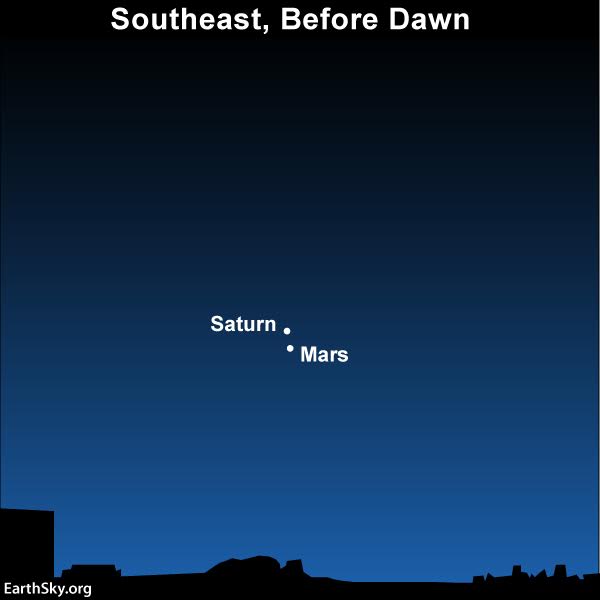

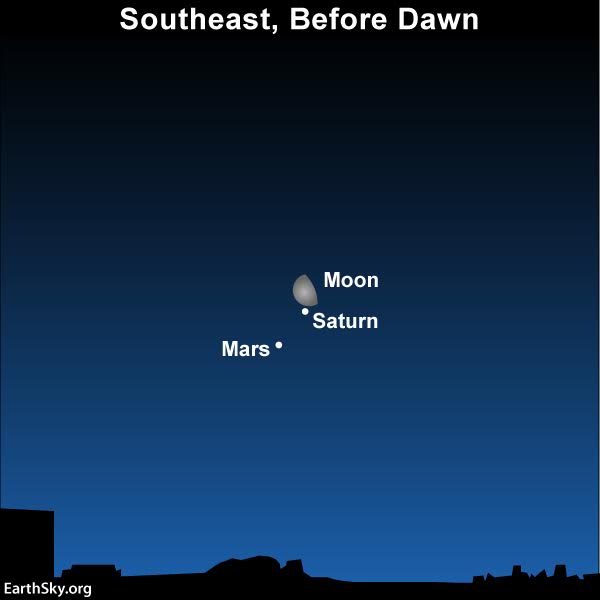
Jupiter, the brightest starlike object in the morning sky, easily outshines Mars or Saturn. Even so, Mars and Saturn are still respectably bright, shining as brilliantly as 1st-magnitude stars, that is, the brightest stars in our sky.
By the way, Jupiter is not the sky’s brightest planet. That honor belongs to Venus, which shines much more brilliantly than Jupiter ever does. In early April 2018, Venus is low in your western sky just after sunset and soon follows the sun beneath the western horizon.
Day by day throughout April, Venus will set later after sunset, while – day by day – Jupiter will rise earlier.
By mid-April, Venus will be setting as Jupiter is rising (given a level horizon). Toward the month’s end, look for Venus and Jupiter to appear opposite one another for a brief while at dusk or nightfall.
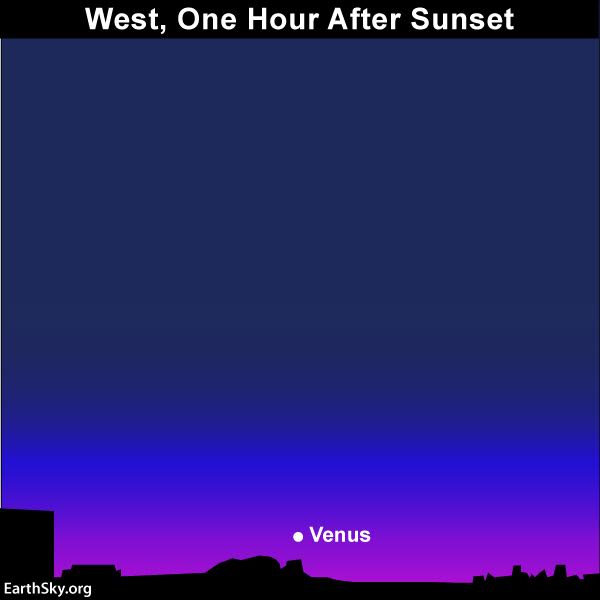
Bottom line: The moon and brilliant Jupiter are close on April 2 and 3, 2018. Bright Mars and Saturn are nearby.



